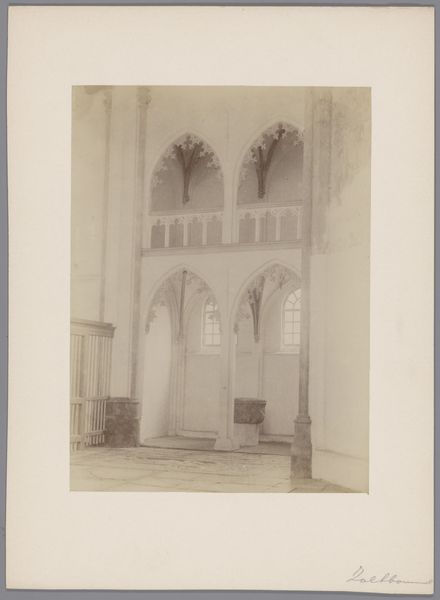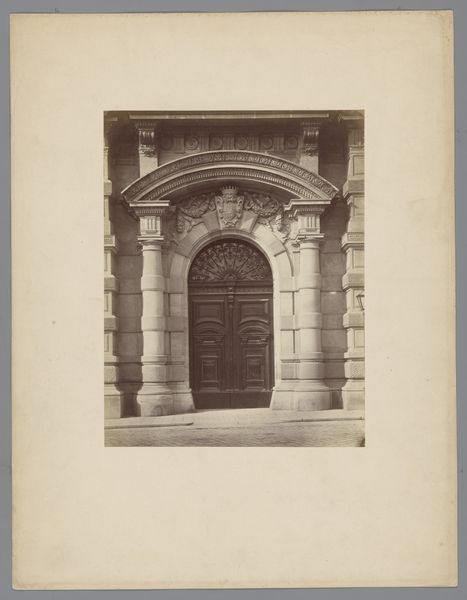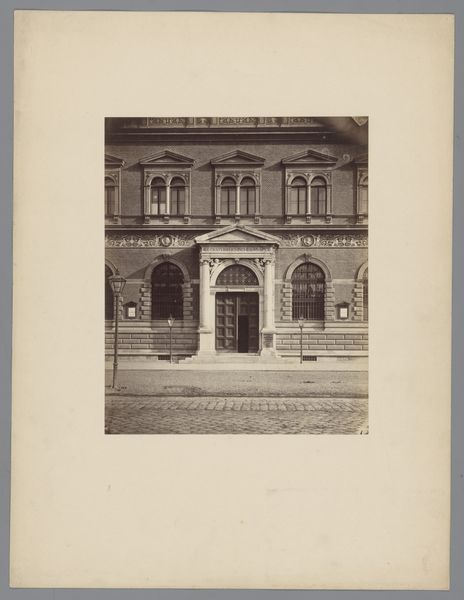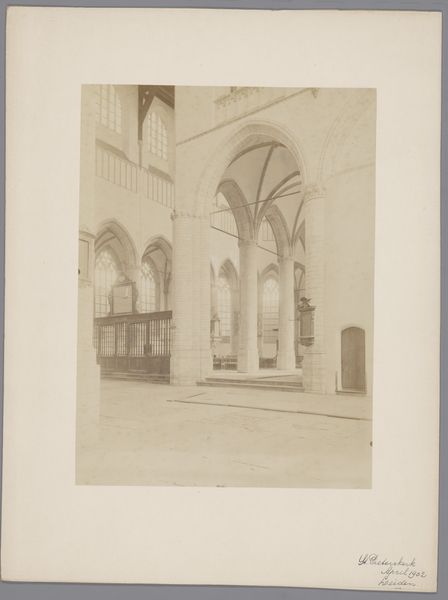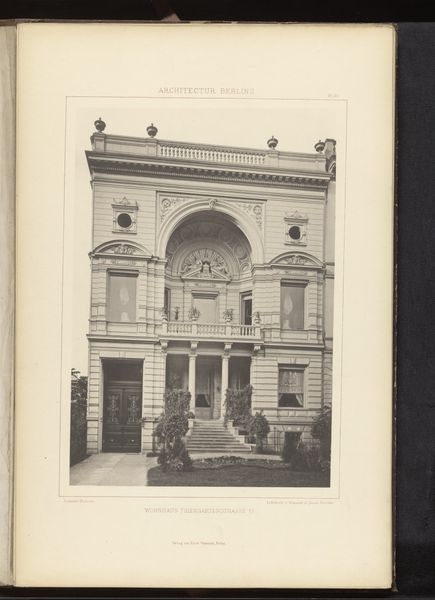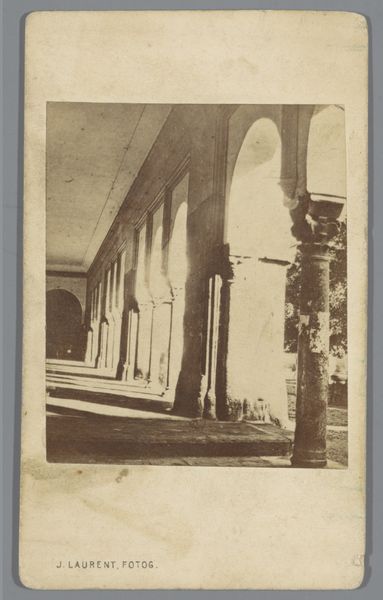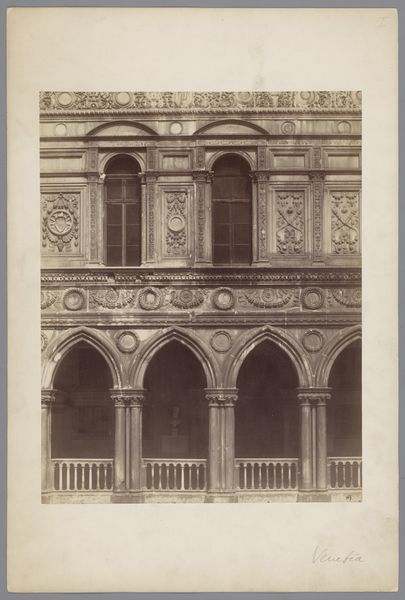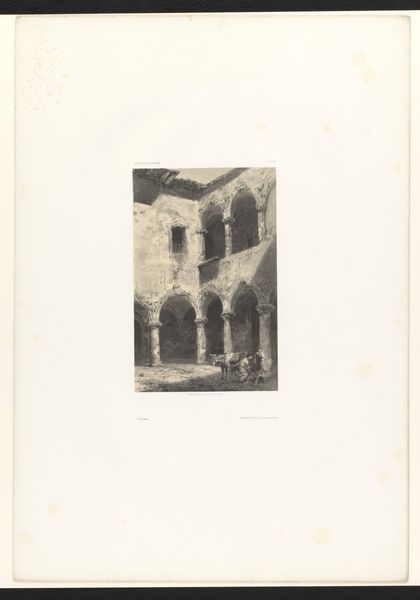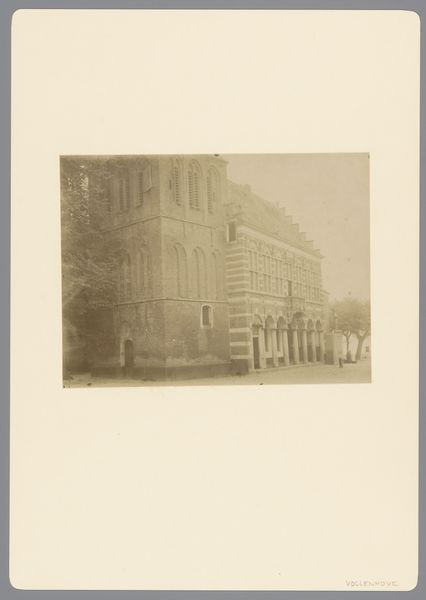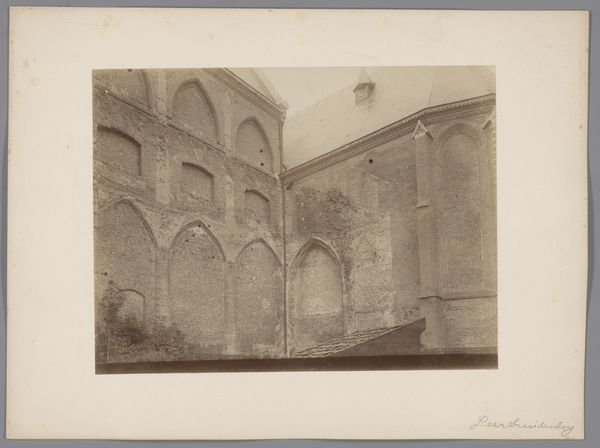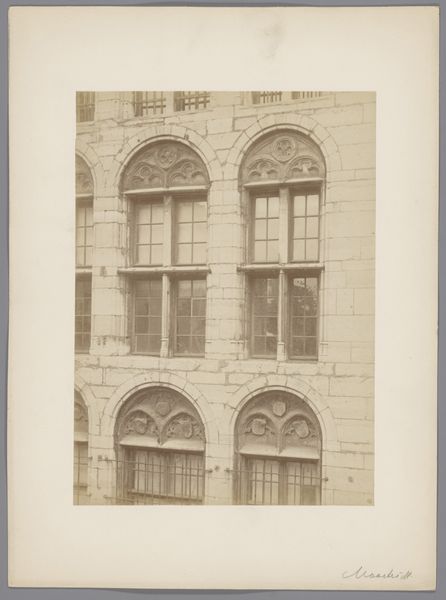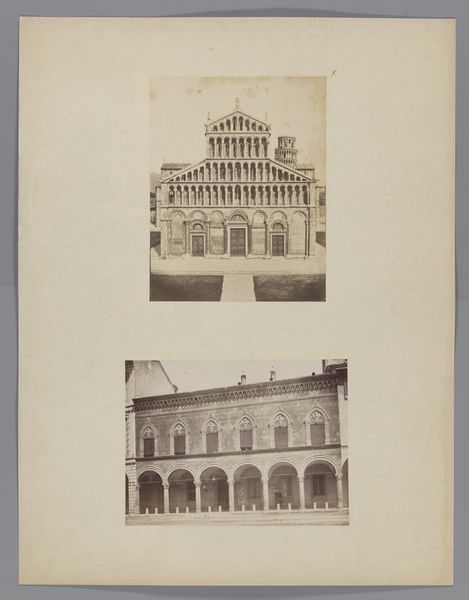
Restanten van de Tempel van Mars Ultor en de Boog van Pantani aan het Forum van Augustus te Rome, Italië 1857 - 1900
0:00
0:00
fratellialinari
Rijksmuseum
Dimensions: height 140 mm, width 97 mm, height 224 mm, width 168 mm
Copyright: Rijks Museum: Open Domain
Editor: This is "Restanten van de Tempel van Mars Ultor en de Boog van Pantani aan het Forum van Augustus te Rome, Italië," a photograph from between 1857 and 1900 by Fratelli Alinari. Looking at it, I’m immediately struck by the textural contrast between the ruined columns and the smooth, modern building in the background. What captures your attention in this piece? Curator: For me, it’s the stark record of labor embedded within those ruins. Think of the quarrying, the transportation, the sheer physical effort required to erect these massive structures initially, and then consider the slow, inexorable labor of decay that time imposes. What we’re seeing here is a transformation of material wealth through human toil and natural processes. Editor: So, you’re seeing the photograph less as a romantic ruin and more as a testament to… material processes? Curator: Exactly. The photograph itself becomes another layer in this process. We’re no longer engaging with the original labor that erected the temple, but the labor of the photographers: the silver mined, the glass plates manufactured, the careful development process. How the photographer chooses to frame the decay… what are they emphasizing and obscuring through that work? Editor: That’s fascinating! It shifts the focus from aesthetic beauty to the material conditions and the process of its creation and later documentation. Does the "gelatin-silver print" process impact this? Curator: Absolutely! It was a relatively new technology then, making the replication and mass consumption of images easier than ever. Think about the implications of tourism here - how is the circulation of this image, created with a specific material process, influencing perceptions of ancient Rome and its legacy? How is it consumed and by whom? Editor: So, it's not just about *what* is being shown, but also *how* it’s being shown and *how* the image is made that creates the image's meaning and significance. Thanks, that makes me look at it very differently! Curator: Precisely. Hopefully, it pushes us to think more critically about the labor and materials inherent in art production.
Comments
No comments
Be the first to comment and join the conversation on the ultimate creative platform.
